5 Foods You Should Feed Birds in Winter
Updated: Nov. 02, 2023
Choose high-energy foods to keep backyard birds well fed during winter. Learn what to feed birds in winter so you can attract more species.
Our editors and experts handpick every product we feature. We may earn a commission from your purchases.
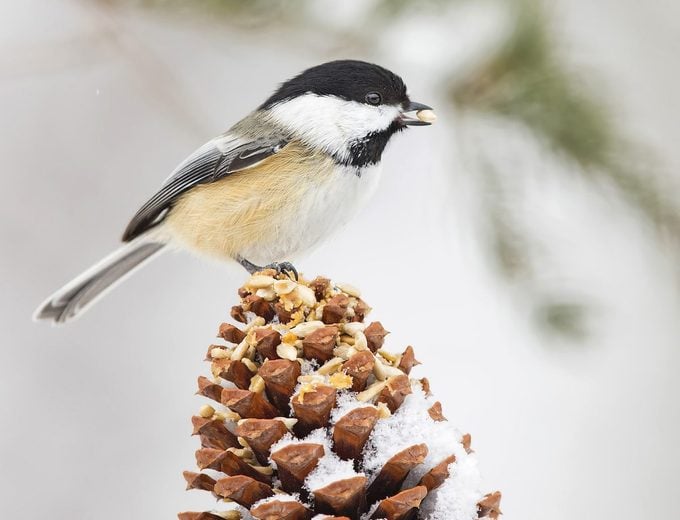
Want to attract more species to your yard, but not sure what to feed birds in winter? Here are five foods birds love that you should add to your backyard menu during the cold weather months. These foods give winter birds the energy they need to make it through chilly days and nights.
Foraging is tough business with snow on the ground, which is why our wintertime bird visitors benefit from high-energy food options. Even during subzero conditions, birds have special ways of keeping warm. Some fliers, such as finches and chickadees, pack on as much as 10% body fat from eating berries and insects in fall to build up their winter stores. But many visitors appreciate an extra food boost. Plan ahead to keep your backyard birds fed when the weather turns cool.
Learn how to help birds in cold winter weather.
1. Suet
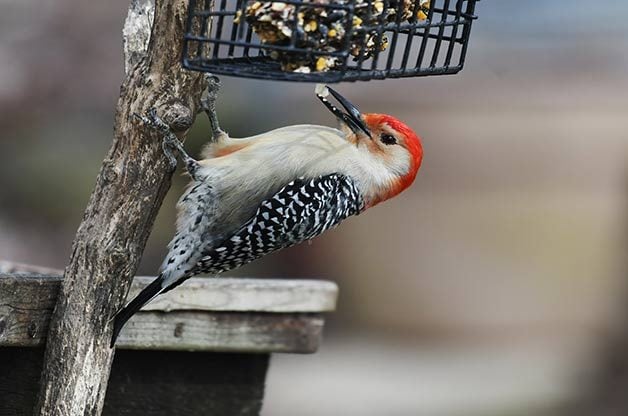
Because animal fat is easily digestible, suet provides important calories for a wide variety of birds. The easiest way to feed suet to birds is to get it straight from your butcher. Put the beef fat in a mesh bag (an empty onion bag works) or a wire cage suet feeder. If the real deal is a little intense for you, birds will devour premade suet cakes from the store, too.
Attracts: blue jays, cardinals, chickadees, nuthatches, pine warblers, ruby-crowned kinglets, tufted titmice, woodpeckers, wrens
Check out the best foods for attracting woodpeckers.
2. Peanuts and Peanut Butter
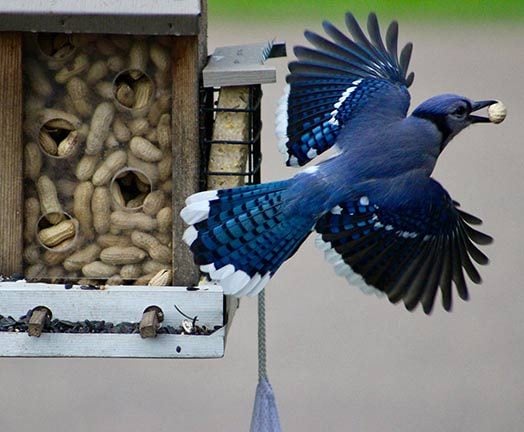
Don’t forget about peanuts. Jays and woodpeckers prefer whole peanuts, while nuthatches and chickadees like the shelled version. Emma Greig, project leader for Project FeederWatch at the Cornell Lab of Ornithology, says peanut butter is another excellent fat source for birds. It can be served either by mixing it with suet or by spreading it on pine cones or along tree bark.
Whether you serve peanuts in the shell or out (just avoid the salty kind), put them in a tube or tray feeder. If peanuts get pricey, mix in some black-oil sunflower seeds. Change peanuts frequently in rainy or snowy weather to prevent mold.
Attracts: blue jays, woodpeckers, chickadees, nuthatches, titmice and house finches
3. Nyjer Thistle Seed
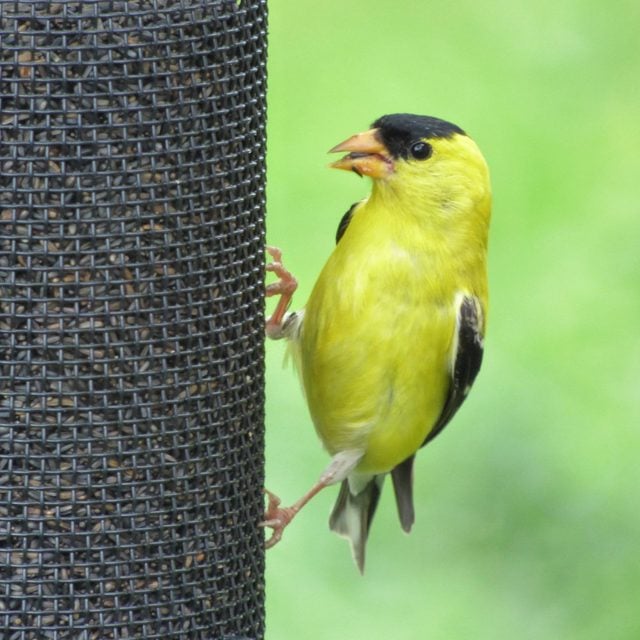
Emma also recommends thistle seeds (sometimes called Nyjer seeds), which attract finches, pine siskins, dark-eyed juncos, and other smaller foragers. Fill a finch feeder with thistle seed (Nyjer) and soon your backyard will be a winter finch haven. The small needlelike seed is a perfect snack for tiny songbirds.
Attracts: goldfinches, pine siskins, house finches and common redpolls
Psst—these are the types of bird feeders you need in your backyard.
4. Black-Oil Sunflower Seed
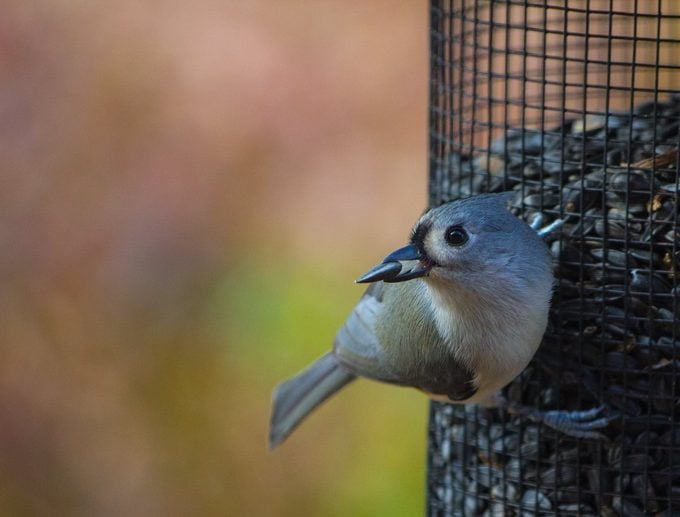
A seed preference test performed by the Cornell Lab of Ornithology showed that the majority of feeder birds prefer high-fat black-oil sunflower seed. It’s simple to serve, too—spread it right on the snow-covered ground or fill up a tube, tray or hopper feeder.
“When the weather is colder, the birds appreciate those fatty seeds,” says Emma Greig. She notes that fat is critical to meet birds’ caloric needs. “An easy bird feed is black oil sunflower seeds,” Emma says. Sunflower seed is popular with most birds that winter in the northern regions and is typically easy to find in feed stores or even grocery stores. Safflower seeds are favorites for northern cardinals and grosbeaks.
Attracts: cardinals, grosbeaks, finches, chickadees and nuthatches
Give birds a place to drink during the cold months with a heated birdbath.
5. Dried Fruit and Berries
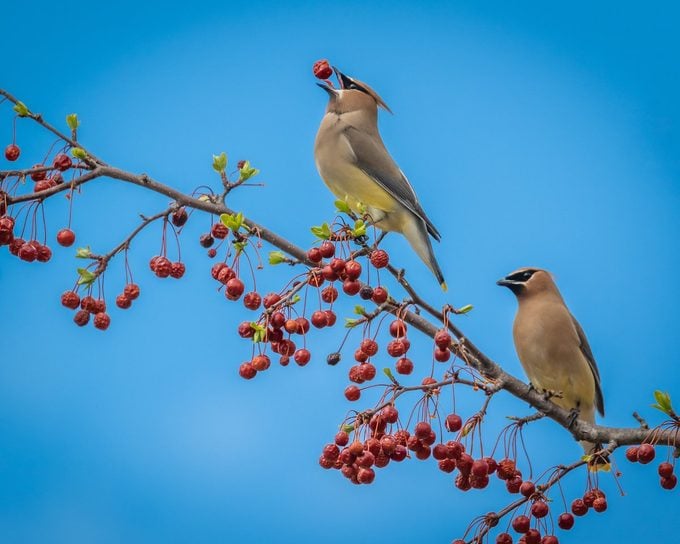
Some birds, such as robins and cedar waxwings, enjoy dried cranberries, currants and raisins. Offer them in a suet cake or on a platform feeder after soaking them in water for a few hours to soften. For an even easier food source, Emma says, “Grow a few trees and shrubs that have berries in the winter.” Chokecherry, hawthorn, snowberry and Rocky Mountain juniper are all good choices for food to feed birds in winter.
Attracts: thrushes, bluebirds, waxwings, mockingbirds, yellow-rumped warblers
Even when the chilly months seem to roll on, it’s simple and fun to provide backyard birds with a high-energy buffet they need while also enjoying a wintry bird fix right outside your windows.
Next, check out 12 winter bird myths and facts.
